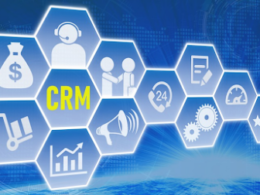You deal with plenty of challenges as an e-commerce business owner. But, there’s likely one big challenge that tops your list: making sales.
You want to get your products into the hands of as many happy customers as you can. Yet, with more than 350 million total products on Amazon and anywhere between 12 and 24 million companies selling their products online, e-commerce competition is stiff.
Now that we are finally transitioning out of the pandemic, we are entering a new era for retail — a hyper-scalable era — defined by the ever-evolving demands of consumers and the agile, flexible systems required to meet them. As part of this shift, leveraging the power of a multichannel approach will be essential for growth, and that means e-commerce merchants must rethink their sales and distribution channels.
How to Build a Brand for the Modern Consumer
In a study Brightpearl recently conducted, merchants selling on multiple channels reported a higher level of growth — 33%, compared to only 8% growth when selling on a single channel.
In this article, we outline four reasons why a multichannel strategy is now one of the best approaches for ambitious brands dealing with market uncertainties and ever-changing consumer behavior.
#1: Multichannel can increase your sales
It’s perhaps obvious, but it’s important nonetheless: Multichannel selling can lead to more sales. That’s because it makes your products accessible to potential customers across a variety of sales touchpoints, from your own e-commerce store, to Amazon, Etsy or even social media sites like Pinterest.
That said, according to Brightpearl’s research, just 14% of retailers in the UK, and a quarter of U.S. firms, plan on adding new channels in 2022
If adding channels is a surefire way to get in front of more potential customers, why are so many brands holding back?
For many, the increased admin and logistics of managing inventory across additional channels — at least if they use a clunky traditional ERP (enterprise resource planning) or OMS (order management system) — is a major roadblock that limits them from growing fearlessly.
But operational issues don’t have to limit growth. When your products are available for purchase on more than one platform, you widen your reach and have the opportunity to get in front of more customers, sell more products and increase your revenue. You just need to be prepared to manage the complexity that can be introduced into your operation.
#2 Strengthen your brand awareness
Increased brand recognition is another benefit of multichannel selling. Having a presence across several different platforms allows you to reach consumers who need your products but might not have thought to search for you — or are simply waiting for your brand to come to them.
However, there’s little point in trying to add multiple sales channels without the right technology infrastructure in place. Too many brands rely on classic ERPs, but the truth is that these aging systems can’t cope with the speed and agility required to quickly integrate new technologies and selling channels.
Having systems that allow you to turn on and off new channels quickly and easily while maintaining full visibility is an essential requirement for expanding into more online markets while maintaining operational efficiency.
5 Ways E-Commerce Entrepreneurs Can Make More Data-Driven Decisions
#3 Enhance customer experience
These days, most people research and shop across an average of three touchpoints, online and offline, before buying. As a result, the path from product discovery to purchase is becoming more complex as a single customer uses more channels to learn about a business or complete a single purchase.
But, that’s where the advantage of multichannel selling comes in. It helps you to be present at various parts of a single buyer’s journey and makes the destination from discovery to purchase much simpler and more joined up — improving the experience shoppers have with your brand and ultimately leading to more sales.
#4 Streamline your business
Multichannel selling is undoubtedly beneficial for e-commerce businesses, but it can introduce layers of complexity. Successful online retailers need to integrate their retail operations, from inventory and order management, through to CRM and accounting, with their e-commerce website.
It might sound daunting, but the process doesn’t need to be complicated, especially if you have a modernized retail operating system that puts sales data in one place and grants complete visibility for every online order.
The right technology should be able to connect you quickly and easily to all of the major e-commerce providers and marketplaces and allow you to manage your inventory, track your orders, and report on performance — all in one place.
A multichannel strategy doesn’t have to mean hopping back and forth between different websites and marketplaces, either. If you make a sale on Shopify or Etsy or Amazon, for example., your inventory levels should automatically adjust across all of your channels so that you don’t accidentally oversell.
Adopting a multichannel approach is important for growing your business in 2022, and by streamlining your operations with a hyper-scalable system you can ensure it’s a success.
The bottom line
A tech-led multichannel strategy is your secret weapon for growing fearlessly this year. It will set your business up for rapid expansion and improvement, while simultaneously being more efficient. So, what are you waiting for?






